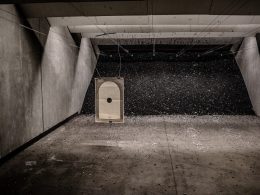Training Guideline Overview
A well designed and implemented training manual is the first step in developing the necessary skills for a productive and self-sufficient employee and the building of a productive and efficient laboratory.
By implementing a proper testing guideline, both the administrator and trainee can remain in sync with scheduling, expectations, and assessments leading to a more thorough and efficient training process. A proper set of training guidelines will allow for a definitive decision of the qualifications of trainees and their ability to perform to be made along with the ability to modify their training as it progresses.
Having a detailed and extensive administrative reference packet containing training references and a comprehensive list of all training certifications and checklists ensures the trainee is up to date and qualified for laboratory examinations and is critical to an efficient and comprehensive training program.
It is critical that all trainees are issued a reference packet with similar information that will also serve to keep feedback presented by the director or lead technician in charge of training and give them proper guidance and references for their development of skills and knowledge on their initiative.
We highly recommend a training packet to be distributed to all personnel, trainers, and trainees, that contains the following information outlined in this proposal.
Below is a general overview of an appropriate training guideline to assess and monitor the training of new technicians as well as material that should be easily accessed for the trainee to continue their work training outside of the initial training process.
Initial Assessment
Directors or lead scientists are responsible for the initial assessment of new personnel’s knowledge and skill set upon entry to the lab as well as the direction of subsequent training.
The director or leading scientist/technician should always thoroughly assess previous education, training, and work experience in the field. This will determine strengths and weaknesses of the trainee from prior experiences to develop a more streamlined training process that will focus heavily on weaknesses while reinforcing and expanding on strengths. This assessment should be completed for all personnel entering the lab regardless of position or title. Personnel overseeing the training process should use this assessment to adjust modules and training schedules accordingly.
BONUS OFFER: Get your free shooting range targets to print at home!
Get your free targets to print at home!
Training Programs (Modular Programs)
Modular training programs help give clear training steps and goals and allows easy monitoring on the part of the director or lead technician. With proper assessment and module development, the training process can become more efficient and geared specifically to the trainee’s weaknesses and be more cost and resource efficient. Trainees should have a detailed outline of modules along with the scope and outcomes of the training session along with examples of assessment questions and references for further study. Throughout individual modules, the trainee should be presented with progress reports outlining areas of strength as well as areas they should become more proficient in during the remainder of the training session.
Trainee Testing
Throughout the training period, trainees should be periodically tested for comprehension of the subject and proficient in techniques. This not only involves standard written and practical assessments, but the use of oral communication and questioning by the examiner throughout the training process to understand and modify the training to reinforce areas of weakness or lack of understanding before moving on to formal assessment criteria.
Written and Practical Assessment
Assessments should be administered at the end of each module section before moving on to subsequent training sessions. Both written and practical components should be implemented to demonstrate a theoretical and practical knowledge of the subject. It is critical that all information or techniques to be tested have been adequately instructed orally or demonstrated during the training module.
At the end of the training modules, comprehensive tests should be given to demonstrate the trainee can integrate all modules into a wide scope of understanding and ability to use knowledge in during the working of a case.
Oral Assessments
Both oral assessments and moot court settings should be used to test the trainee’s ability to follow protocol and adequately convey finding and results. This assessment is of particular importance for trainees who might find themselves testifying in a court of law, including NIBIN technicians.
In-depth Knowledge
To demonstrate a working knowledge of the field, the preparation and production of a peer-reviewed research paper are highly recommended. This route also provides the trainee with opportunities to connect with other members in the field and open up further avenues for career opportunities. While not necessarily a part of the training process, this is an excellent early project for trainees to develop mastery of specific niches within the field.
Continued Training
After a demonstration of a working knowledge of laboratory practices and the demonstration of the ability to effectively communicate results and findings, new avenues of training and advancement should always be available and encouraged for the new worker to participate in. This includes but is not limited to, visiting outside labs, manufacturing companies, and attending conferences. These options should be outlined with specific and pertinent information in each training manual for the trainee’s benefit.
Training Guidelines for Forensic Science Technicians (FST) and Laboratory Aide (LA) Personnel.
All forensic science technicians and laboratory aide personnel should be supplied with a training manual specific to their position and training regiment.
There should be clear training goals listed earlier in the training manual and conveyed orally by the instructor early in the initial assessment and throughout the training process.
Included with the modules should be forms documenting the identification of the examiner and trainee. Records of competency tests and results including data gathered, analysis, and proper action and feedback of the examiner.
At the completion of training, the FST/LA personnel should be proficient in the following;
- Preparing and using chemical reagents and solutions for laboratory work.
- Handling and documenting chain of evidence properly
- Perform firearm safety checks and fire 9mm handguns while adhering to laboratory safety guidelines
- Collect, record, and distribute results to appropriate entities.
In the training guide for FST and LA personnel, descriptions of work expected should be clearly outlined with documentation for each worker completing the appropriate training modules.
The following responsibilities and expectations of FST an LA personnel should be clearly outlined in the training guideline and covered by training modules and be available for both directors and trainees including the following;
- Evidence Handling. The personnel should be well versed in the collection of evidence including marking and bagging and maintaining chain of evidence.
- Laboratory Operations and Procedures. Personnel should be proficient in the preparing and storing chemical reagents and solutions. Personnel should be able to order and document chemicals and ammunition through the correct vendors. Personnel should be able to follow labs system on filing ammunition and reading and updating firearm reference collection. Personnel should be proficient in basic instrument maintenance and calibration as well as proper venues to contact in case of faulty or broken equipment.
- Miscellaneous Office Support. FST and LA personnel should be able to assist in basic office procedures.
FST and LA personnel should be encouraged to continue education and broaden their work experience through the listed methods and avenues in the continued education section.
Training Guidelines for NIBIN Technicians
All NIBIN technicians should be supplied with a training manual specific to their position and training regiment.
There should be clear training goals and expectations listed earlier in the training manual and conveyed orally by the instructor early in the initial assessment and throughout the training process.
Forms should be included with the packet documenting the identification of the examiner and trainee. Records of competency tests and results including data gathered, analysis, and proper action and feedback of the examiner.
The following list is examples of training modules to be present in the training guide for NIBIN technicians and also serve as goals for the trainee to strive towards during their training. Technicians should be proficient in the following procedures before moving on to subsequent modules. Modules are in no particular order and are at the discretion of the director based on initial assessment of the trainee.
- The Operation of Laboratory Equipment: Personnel should be proficient in the use and intricacies of instruments used in lab settings. Personnel should be able to run diagnostics on instruments thought to be malfunctioning.
- Test Firing: Personnel at the end of their training should be proficient in the safety and use of a wide array of firearms to be test fired for evaluation through both hands-on and written instruction closely monitored by the director of training.
- Comparison of Spent Casings: By the end of the training module, NIBIN technicians should be proficient in the ability to compare and regularly identify key characteristics of fired casings and able to distinguish between the different classes of casings.
- Bullet Comparison: By the end of the training period, NIBIN technicians should be proficient in identifying class of bullets, and able to distinguish between individual bullet characteristics.
- NIBIN Software Programs and Data Entry: By the end of the training period, NIBIN technicians should be proficient in the entry and examination of images within the software, able to input data, and able to run computer simulations and provide results.
Each training module should be accompanied with resources to primary literature in the field for the trainees to widen their scope and knowledge of the subject area. Progressive reports for each training module should be routinely presented to the trainee outlining areas of strength and areas of needed improvement.
Training Manual Outline
The following is a brief outline of the structure and components that should be integrated into a complete training manual available to both the director or lead trainer as well as the trainee at the end of the initial assessment where the director or lead technician has personalized the training process for the specific trainee.
- Table of contents
- Short statement from the director/department
- Brief history and mission statement of the company
- Departmental contact information
- Laboratory and departmental policies
- Expectations of trainees
- General laboratory safety rules and procedures
- Outline of training modules to be covered and passed
- Tentative training schedule
- Outline of examination methods and samples
- Training Modules
- Topic
- Scopes and Outcomes
- Training information
- Assessment examples and structure
- Additional resources
- Departmental resources
- Options for additional education opportunities
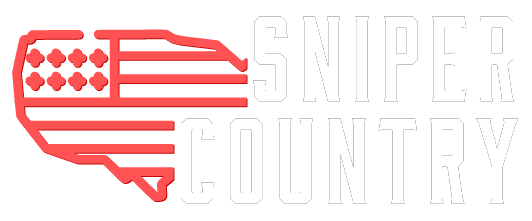
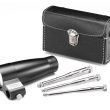
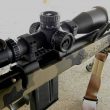
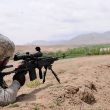
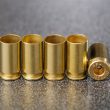

![Best .30-30 Scopes For Lever Action Rifles [And Mounts]](https://www.snipercountry.com/wp-content/uploads/2018/06/Best-.30-30-Scopes-For-Lever-Action-Rifles-And-Mounts-260x195.jpg)

